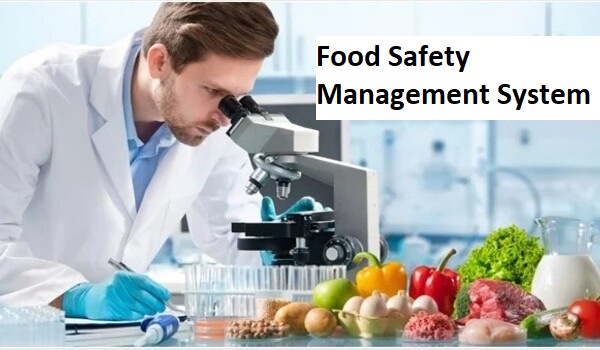A Food Safety Management System (FSMS) is a systematic way to guarantee food safety. This guide delves further into Food Safety Management Systems, including their purpose, processes for implementation, and issues encountered.
Designed for food safety specialists, this guide provides insights into improving food safety practices, describing practical methods for creating an FSMS, and solutions for overcoming typical roadblocks. This guide is a helpful resource for your food safety journey, whether you are enhancing an existing Food Safety System or developing a new one.
The 5 Steps of a Food Safety Management System
Effective ISO 22000 implementer training and instruction are required to guarantee that all employees understand their duties in ensuring food safety. Regular training updates serve to reinforce standards and keep employees informed of new rules or industry changes.
Let's take a look at how to put your food safety system in place.
Analyze Your Operation and Establish Objectives and Scope
It is critical to completely understand your organization before developing a Food Safety Management System. This covers the complexity of your operations, the nature of your products, and the potential hazards associated with them. The analysis should contain a complete description of the product flow, equipment used, and persons engaged. The next step is to define the aim and scope of your FSMS. The goal should be aligned with the larger organizational goals, such as guaranteeing food safety, achieving regulatory compliance, promoting brand reputation, or improving operational efficiency. The FSMS scope specifies the physical boundaries (such as specific production lines or facilities) product categories and tasks covered by the team.
Form a Food Safety Team:
The development of a dedicated food safety team is essential for the successful implementation of all Food Safety Management Systems. This multidisciplinary team should include persons with knowledge and competence in various organizational activities.
Representatives from locations such as:
- Quality Assurance: These individuals can advise the team on existing quality protocols, standards, and regulations, as well as play an important part in ensuring that the FSMS aligns with the organization's quality goals.
- Production: Production team members can provide insights into day-to-day operations, grasp the subtleties of procedures, and assist in identifying potential hazards or operational inefficiencies.
- Cleaning and Maintenance: Cleaning and maintenance personnel are aware of the unique requirements and problems that come with maintaining the cleanliness and operational efficiency of machines and facilities.
- Supply Chain: Individuals involved in obtaining raw materials and delivering completed products might identify possible hazards linked with various stages of the supply chain.
Develop the Food Safety Policy:
The creation of a food safety policy is a critical duty for the food safety team. These food safety documents define the organization's commitment to food safety and should be endorsed by top management to indicate the seriousness of this commitment.
The policy should:
- Describe the framework for developing and reviewing food safety objectives.
- Declare the organization's intention to produce safe, legal, and high-quality products.
- Commit to meeting all applicable statutory, regulatory, and consumer obligations.
- Emphasize the importance of reaching these goals to all staff.
- Pledge to constantly increase the system's effectiveness.
Food Safety Management System Validation
Validation is gathering and analyzing scientific and technical data to evaluate whether the Food Safety System will effectively control hazards when correctly implemented. This is a preliminary procedure performed before installing the FSMS and should be repeated if major changes are made to the process. A high-heat treatment used to kill bacteria in canned foods, for example, would need to be validated to demonstrate that it regularly achieves the requisite temperature for the required amount of time. Laboratory testing, literature studies, and prediction modelling may all be part of this procedure. Validation should be carried out as follows:
- Whenever there is a process change that could affect control measures.
- Whenever a new product, procedure, or piece of equipment is released.
- At the very least, once per year to ensure continued effectiveness
Define Verification Procedures
Verification is a vital stage in the implementation of an FSMS. Its goal is to demonstrate the effectiveness of the control measures put in place. This frequently entails gathering scientific evidence, running tests, or collecting ongoing data. For example, a corporation may validate a pasteurization method by conducting tests to demonstrate that the heat treatment effectively reduces hazardous germs to safe levels. Similarly, a company might validate a refrigeration control method by collecting temperature data over time to demonstrate that the temperatures consistently remain within the permissible range, preventing bacterial growth.
Source Link: https://foodsafetystandard.wordpress.com/2024/01/06/5-steps-for-the-food-safety-management-system/


No comments yet